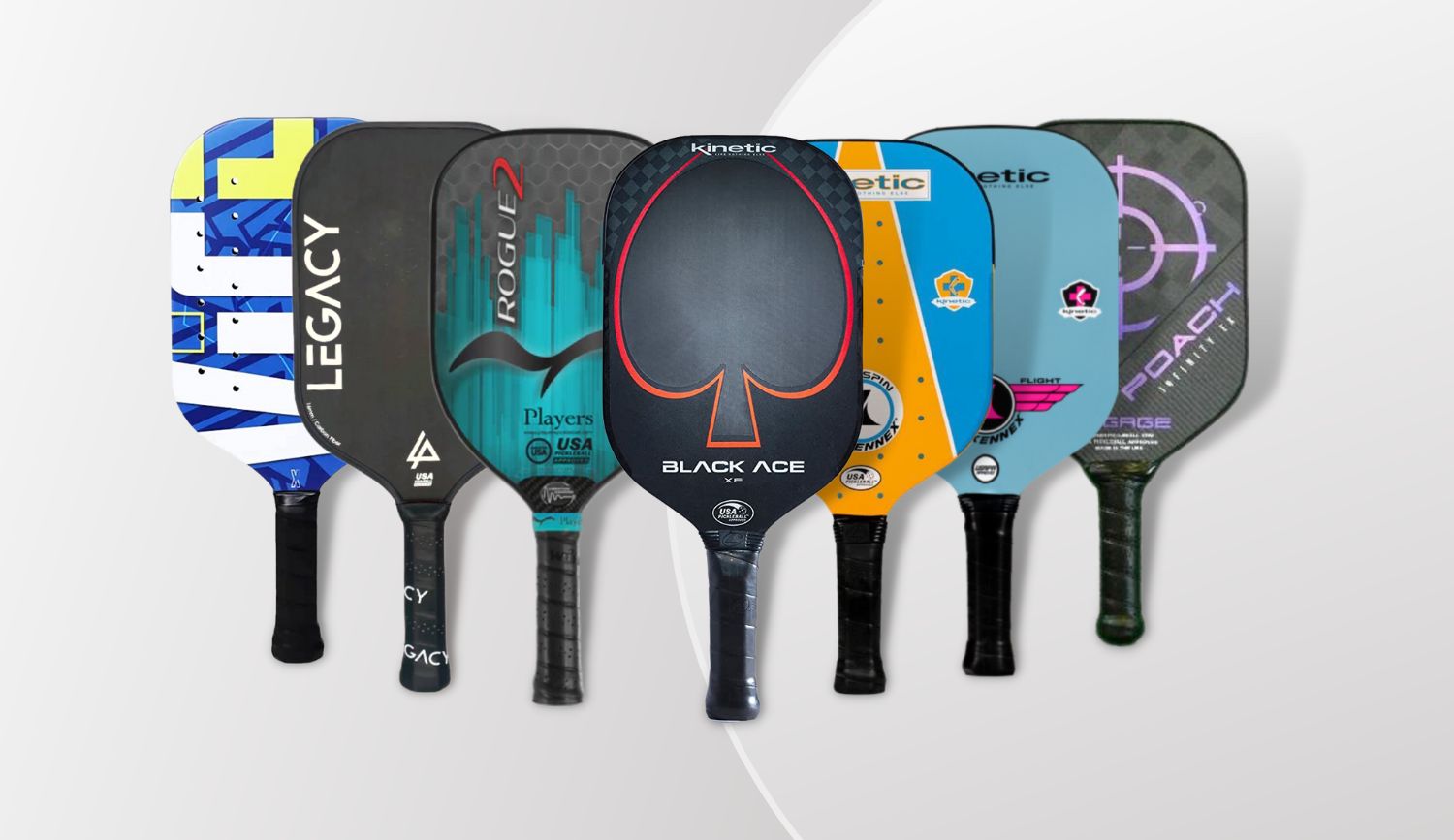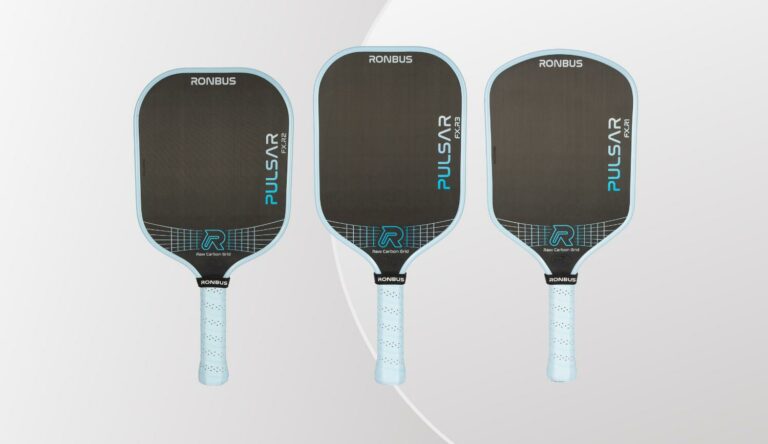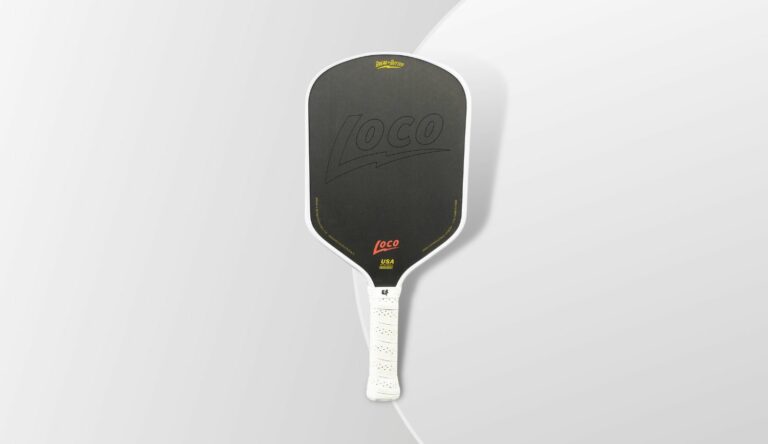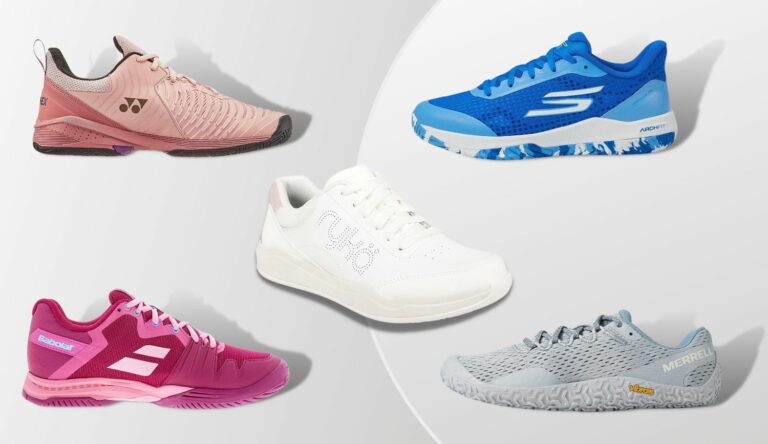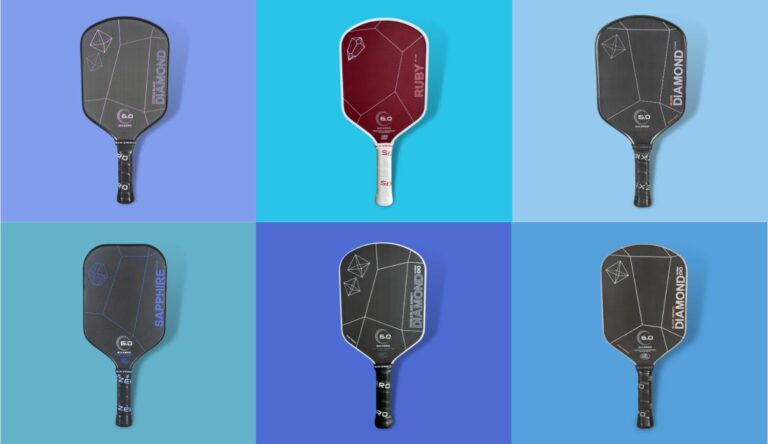Is tennis elbow keeping you down? It’s one of the more frustrating wear-and-tear injuries you can get from playing pickleball. We all love pickleball and want to play it as often as we can.
Sure, you can simply play through the pain and discomfort. But that’s not a smart move. If you throw caution to the wind, this progressive injury can leave you unable to shake a hand or hold a coffee cup without pain.
In addition to following general tips about healing pickleball elbow, the right paddle will enable you to hit the court more often and more comfortably. In this post, you’re going to learn about the best pickleball paddles that will help keep your tennis elbow from flaring up.
Contents
What causes tennis elbow?
Tennis elbow is a relatively common ailment that’s caused by damage to the muscles and tendons in and around the elbow. Repetitive and strenuous activities that involve gripping, twisting, or lifting with the forearm muscles are the typical causes, which lead to inflammation and pain.
Pickleball is not as jarring and potentially damaging as other racket sports and activities. Tennis, for example, has heavier racquets and balls. So if you’re getting bad tennis elbow from pickleball, then you’re probably dealing with one of the following issues:
- Poor playing form/technique
- Overexertion/overuse of muscles and tendons
- Weak muscles/tendons
- Paddles with a bad weight/balance ratio and lots of reverberation.
You can learn a lot more about it and how to heal it here.
Can a pickleball paddle help with tennis elbow?
There’s some debate in the pickleball community about this. Some people swear by a certain paddle’s ability to improve their tennis elbow condition, while others say that the paddle you use makes no difference.
I’m a firm believer that, with the right paddle, you can reduce the occurrence of tennis/pickleball elbow. By the same token, certain paddles can make will tennis elbow worse. For example, the head-heavy Hyperion CFS is commonly maligned for causing or worsening some people’s tennis elbow.
Why do some paddles help while others hurt? There’s huge variance in weight, weight distribution, vibration reduction, etc across paddle models. These are all factors that influence tennis elbow strains. And the paddles in this list all feature qualities that will improve the outlook for all of these factors.
While I recommend picking up a paddle to help your tennis elbow, you should still address your condition in other ways, as well. Your new paddle should provide some relief and stop things from getting worse, but you want to address any underlying issues to stop things from getting worse in the long run.
You may want a professional coach to review your swing mechanics to address any technique/form issues. You should also read up on equipment, exercises, and other remedies for tennis elbow. I wrote a whole post on treating tennis elbow.
Paddle characteristics that affect tennis elbow
1. Weight and balance
The common dogma used to be that lightweight paddles would help with pickleball elbow. But new research has shown the opposite. For tennis elbow, you want a paddle that’s slightly on the heavier side, but not head-heavy.
A good average weight to reduce tennis elbow would be 8.0 oz. Some players like even more weight. This is fine, even up to 9.0+ oz. The extra plow-through and power from a heavy paddle take a lot of pressure off of the elbow. It does the work for you and has far less reverberation. Be aware that you’ll need some muscle strength to wield a heavier paddle.
And do make sure that the paddle isn’t head heavy, as that can make tennis elbow worse. You can (and should) add weighted tape to the paddle throat area to make the balance closer to the handle of an otherwise head-heavy paddle.
2. Grip size
Having a large paddle grip reduces the tendency to squeeze your handle too tightly. Excessive grip tension stresses the lateral forearm muscles which increases the likelihood of developing tennis elbow symptoms.
It’s recommended that you get a paddle with a large (but not too large) grip circumference. You can also add an overgrip to a smaller paddle handle to thicken it up. This will help limit any tendencies to clench too much.
3. Shock/vibration absorption
Some paddles have excellent vibration dampening, while others create excessive vibrations which can significantly exacerbate elbow pain.
There are paddle brands that specifically manufacture their paddles to reduce vibration for tennis elbow. They utilize gel cores and gel in their handles (more on them later). You can also get a gel grip which will add vibration absorption to any paddle.
The best pickleball paddles for tennis elbow
Below I’ve summarized the best paddle choices you should consider when choosing a paddle to reduce pickleball elbow. All of these paddles are well known to improve the symptoms of tennis elbow.
While it’s not a guarantee that they’ll fix your tennis elbow, these paddles are going to be a huge step up in relief from heady heavy paddles like the Joola Hyperion.
ProKennex Paddles

You’ll hear about ProKennex paddles just about anywhere you look for tennis elbow paddle help. I know a number of players who’ve turned to these paddles in desperation and experienced huge relief for their tennis elbow symptoms.
Why? Because ProKennex uses patented vibration-dampening technology. They coined their “kenetic system” which features micro-bearings and advanced physics which take the energy from hitting the ball (torque, vibration, and shock) and absorb it into kinetic chambers within the paddle.
While it may sound like marketing hype, this is the real deal and effectively eliminates a great deal of vibration getting to the arm. The shock and vibration it absorbs is noticeable, as are the results people are getting. As a result, these paddles have become a bit of a cult favorite for tennis elbow.
The creator of ProKennex, Steve Dawson, was a pro tennis player but had to stop playing in part due to his tennis elbow. He went on to create a pickleball line that’s been manufactured specifically to address tennis elbow issues.
Here’s a link for 10% off of all ProKennex Paddles.
ProKennex Black Ace
The Black Ace is a hugely popular paddle, and not just for tennis elbow. It’s a premier power paddle that delivers some stellar performance.
A lot of players who don’t suffer from tennis elbow at all are obsessed with this paddle. But it’s particularly prized by those who do have the condition due to the kinetic beads in the handle that do such a good job at reducing tennis elbow symptoms.
One of my doubles partners picked the Black Ace up two months ago after being sidelined by pickleball elbow. After playing with it for 8 weeks now, they’re playing better than ever.
ProKennex Pro Flight/Ovation Flight
While the Black Ace is best for power players who are at a somewhat advanced level, the Pro Flight and Ovation Flight paddles are perfect for newer players suffering from tennis elbow.
The Flight model has a low swing weight and very little vibration. It’s also cheaper than the Black Ace at under $200. It’s the perfect paddle line to start with from ProKennex.
ProKennex Pro/Ovation Spin
While the Spin line features the vibration-dampening kinetic tech, it’s not the paddle I’d recommend from ProKennex.
The Spin models do not have the best dampening qualities of the group, and the spin capabilities are not top-tier in my opinion, even with Spin in the name.
If this paddle appeals to you, though, it should still be a good choice for tennis elbow. Just know that it’s not as good as the Flight or Black Ace for your elbow, and the Spin capabilities may underwhelm.
The regular ovation seems to have better dampening qualities than the Spin models.
ProKennex Cons
While the ProKennex paddle lines have a good track record for helping players reduce elbow pain, they also have some potential shortcomings.
These paddles are thinner than average, which makes them stiff. It also means that off-center shots that don’t hit the sweet spot can create a good deal of vibration. It takes a more advanced, or in the least accurate, player to really get the most out of the potential vibration reduction of these paddles.
The paddles grips on ProKennex paddles are also very narrow, and will likely need to be thickened up with an overgrip for a lot of players combating pickleball elbow.
You also might want to add weight to ProKennex paddles, as they typically come in under 8 oz.
If you’re up for the learning curve of these thinner paddles and are okay with doing a bit of modification to taste with overgrips and weight, then you’re likely going to be very happy with the ProKennex paddle lines.
Again, here’s a link for 10% off all ProKennex Paddles.
Players Rogue 2

The Rogue 2 is a big player favorite for tennis elbow. It has a gel core paddle and other vibration-dampening technologies, like a reinforced throat. It’s also priced well.
This paddle has a larger sweet spot than the ProKennex lines, and it also doesn’t vibrate as much on mishits that don’t land in the sweet spot.
I know a lot of people swear by this paddle and have testified to the support it’s provided to their ailing elbow.
Legacy Pro

The Legacy Pro is one of the hottest paddles in 2023. The owner battled elbow issues playing as a baseball pitcher and worked to engineer the Legacy Pro to eliminate vibrations. It also has edge foam injections which further reduce vibrations.
I know a handful of players who have switched over to the Legacy Pro from ProKennex paddles and they haven’t experienced any drop-off in tennis elbow relief. They’ve also raved about the performance of the Legacy Pro.
This paddle happens to be my main paddle. It has phenomenal spin and power with impressive control. With an overgrip and some lead tape on the lower half of the paddle, this thing hits very smoothly with no vibration.
I’ve written a detailed review of the Legacy Pro, which you can find here.
Engage Paddles

Engage paddles are another popular choice for players dealing with tennis elbow. These are great all-around paddles that have plenty of pop, power, and spin.
Most of the Engage models offer support for tennis elbow, including the Engage Pursuit and Engage Poach. You can get 10% off all Engage paddles with this discount link.
I play with a number of local players that have used every paddle on this list and will fully recommend Engage paddles to those with pickleball elbow.
Diadem Vice

The Diadem Vice is probably the most tennis elbow-friendly paddle on this list. Plus, it’s one of the most fun paddles I’ve played with. But it’s not ranked high because it is not approved for tournament play.
The reason for this is the materials it’s made with. The Vice uses an EV foam core, which is impressive, albeit not an officially approved paddle core material. The EV foam reduces vibrations substantially. It absorbs impact like crazy. You feel basically zero vibration and it’s not at all jarring to play with.
This paddle may not work for competitive tournament players, but the Diadem Vice and Ronbus EV.1 (another foam core paddle) are perfect for rec players that love the sport too much to stop playing, even with their tennis elbow.
In Summary
Hopefully, you’ve found your next paddle on this list. If you decide to pick one up, be aware that you may want to modify your new paddle with weighted tape and an overgrip for best results.
Also, remember that simply swapping your paddle to a tennis elbow-friendly option might not alleviate all of your pain. It’s important to learn about improper form mechanics that contribute to tennis elbow symptoms. You should also investigate additional products and treatment options for your tennis elbow.
You can learn more about healing from tennis elbow in my main post, found here.
